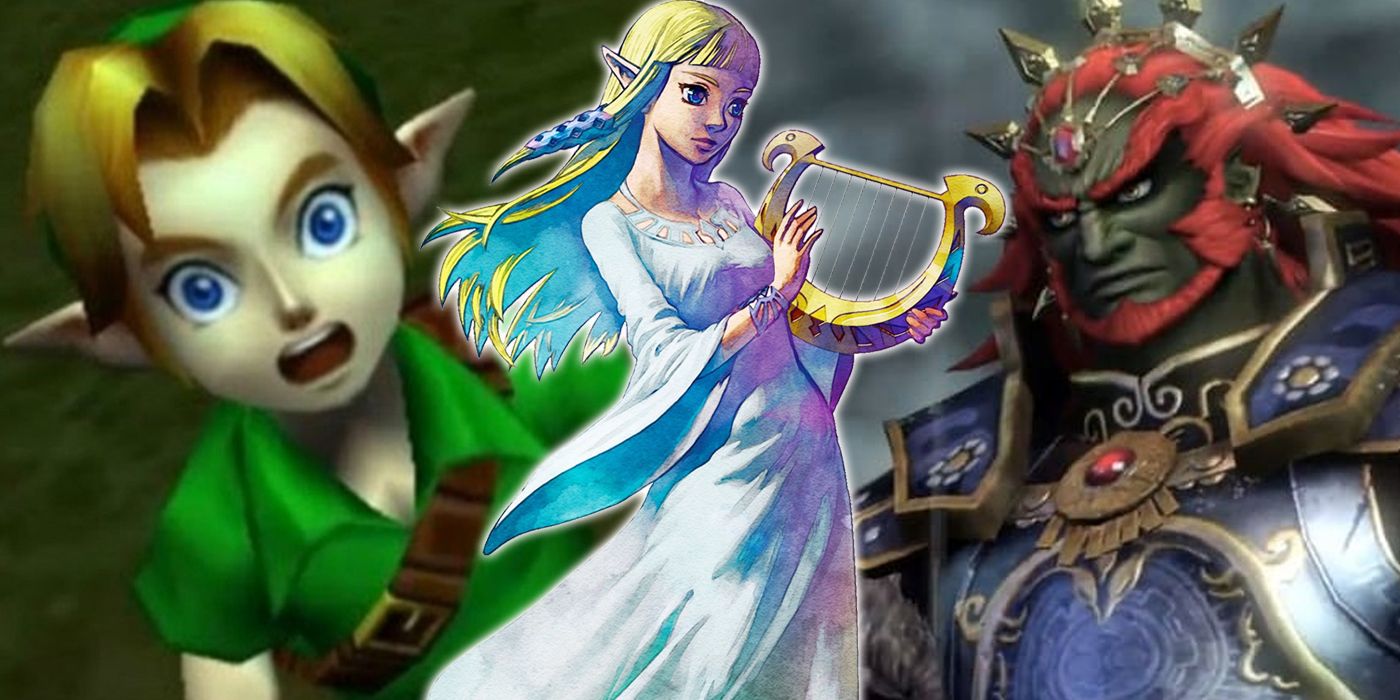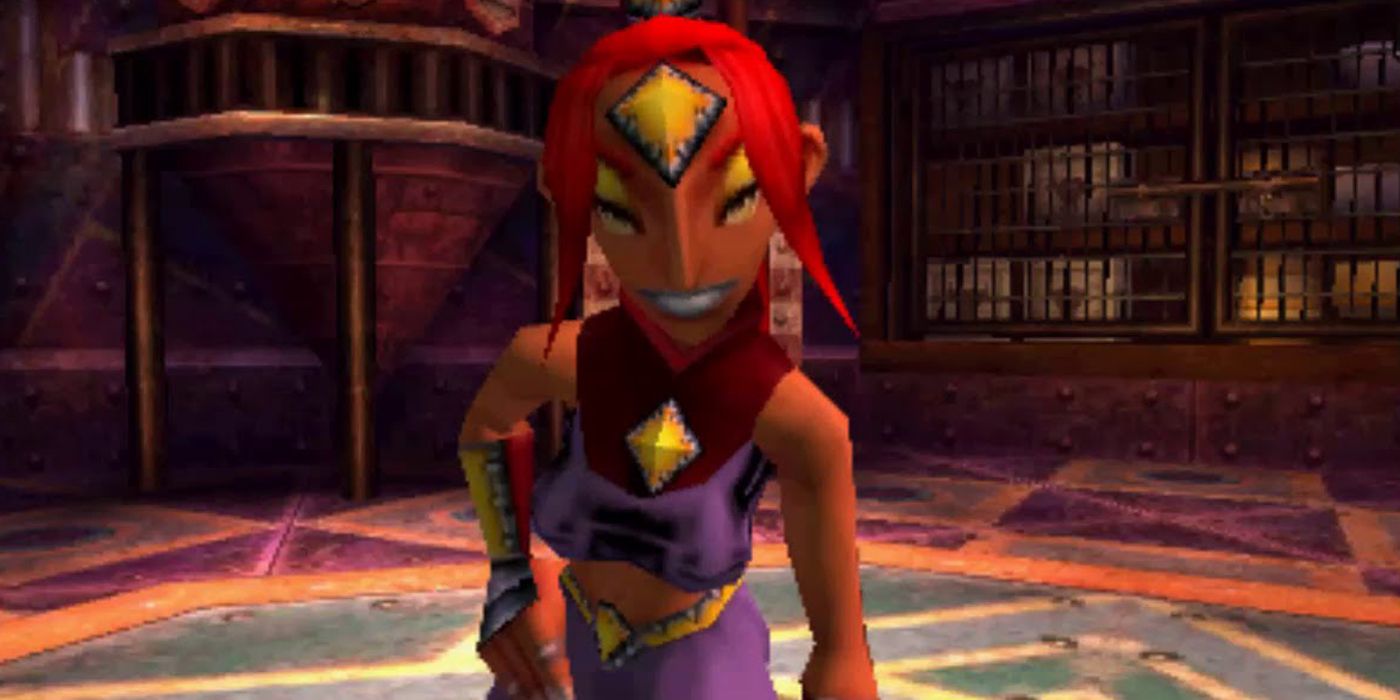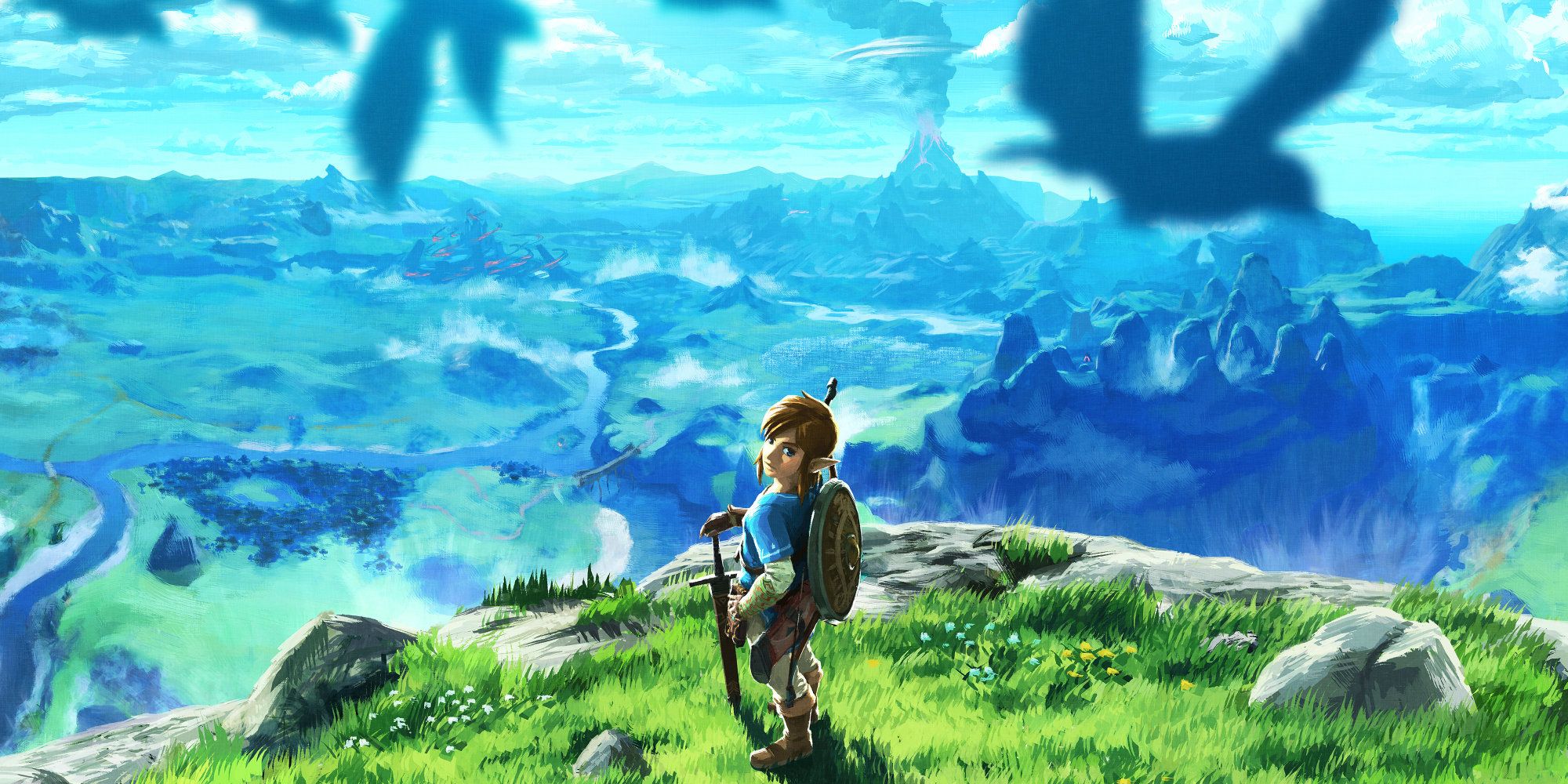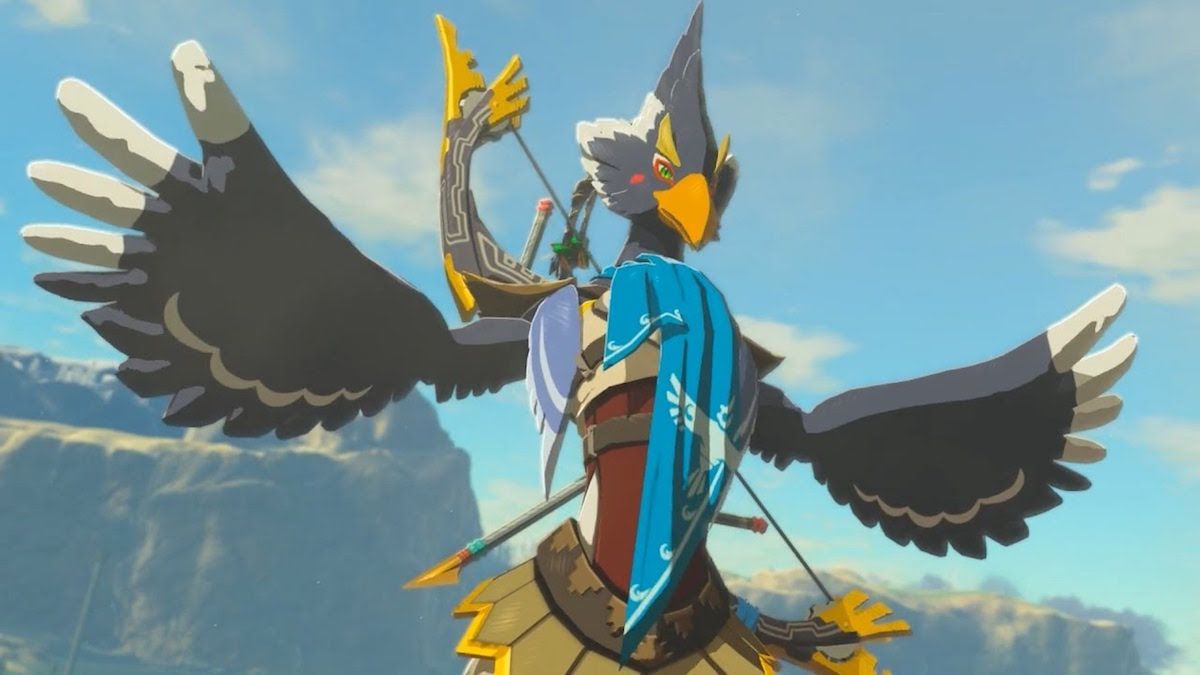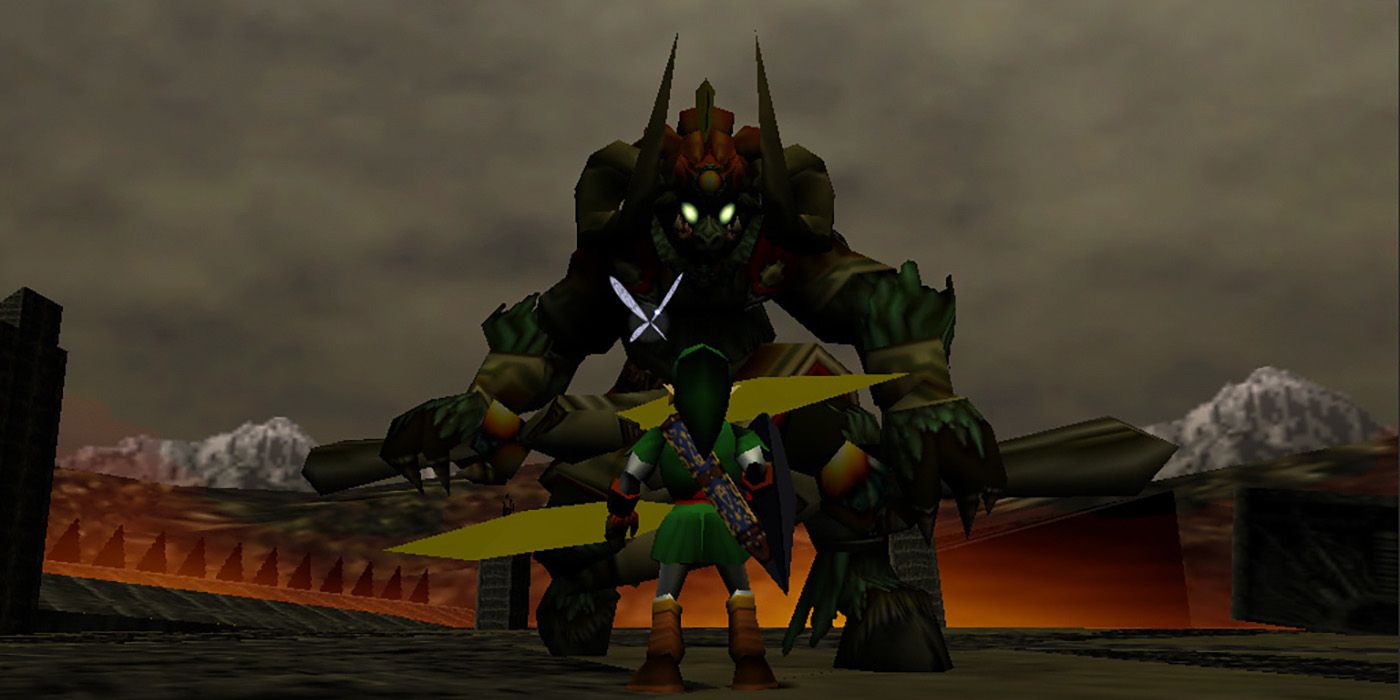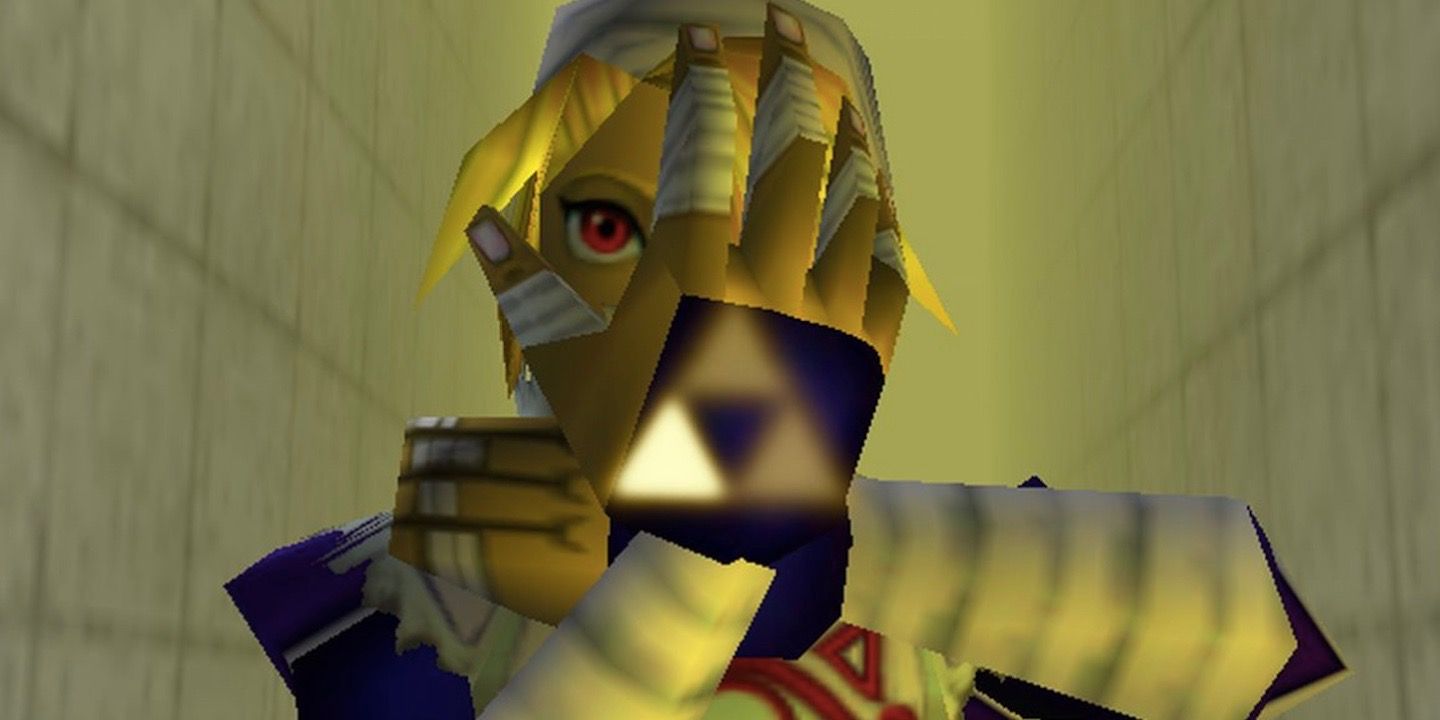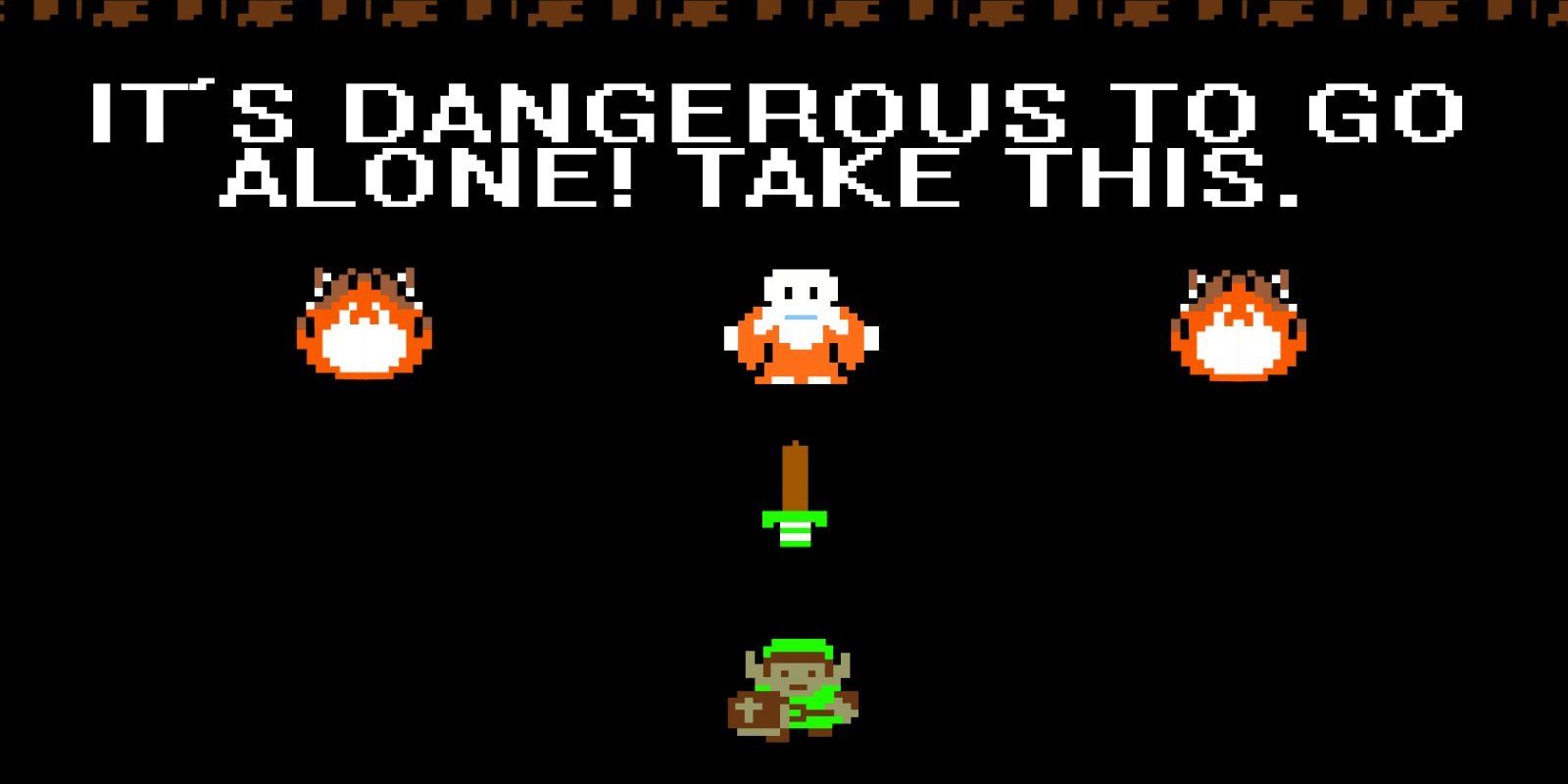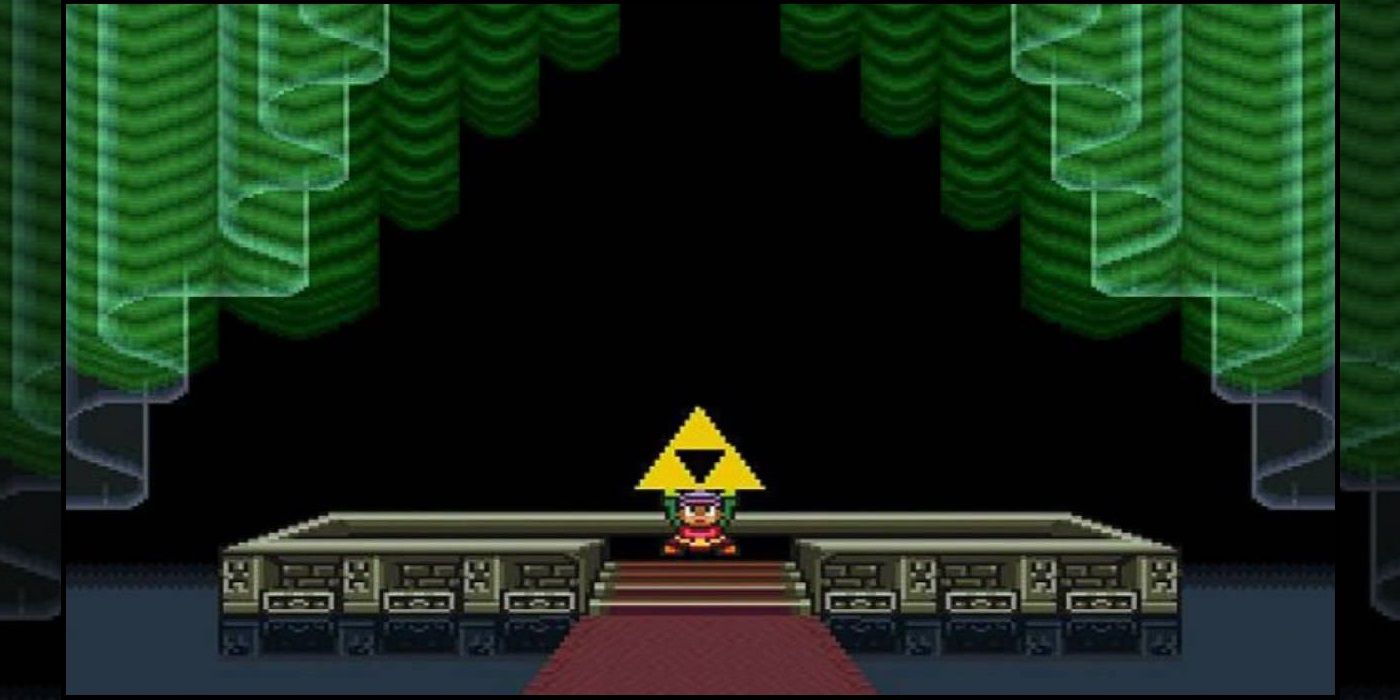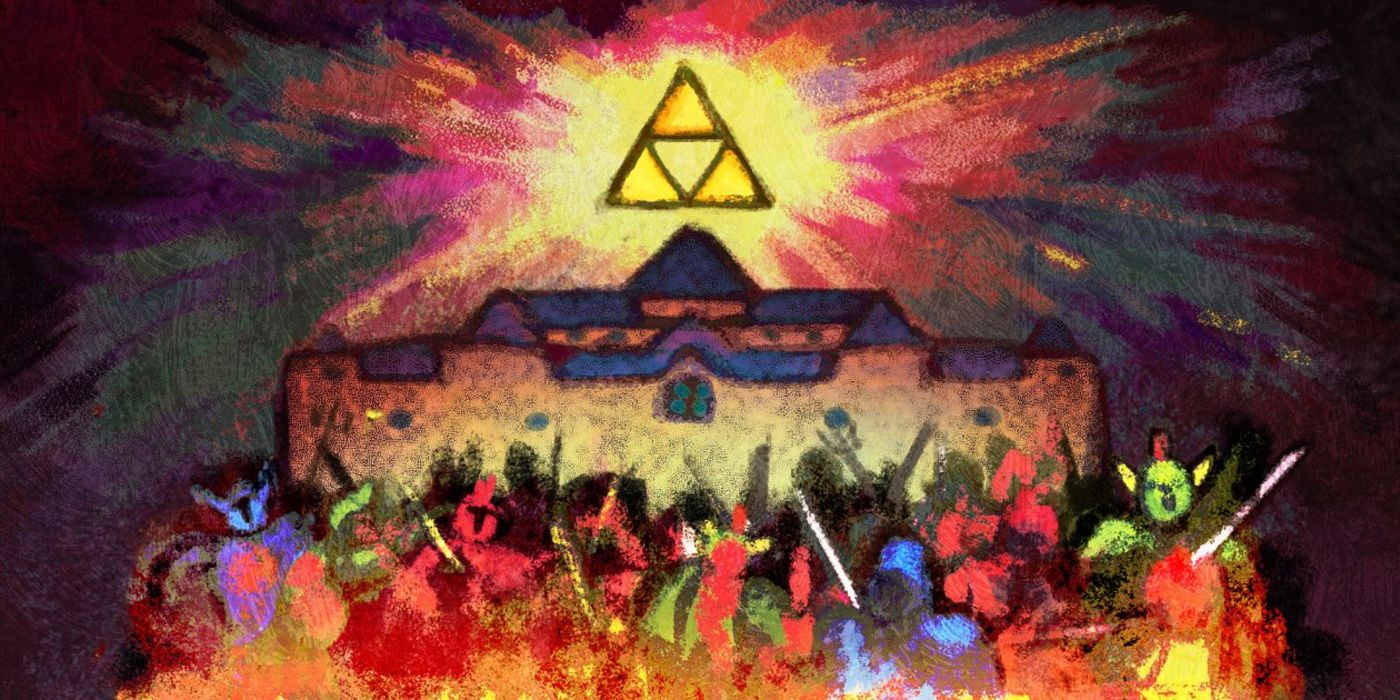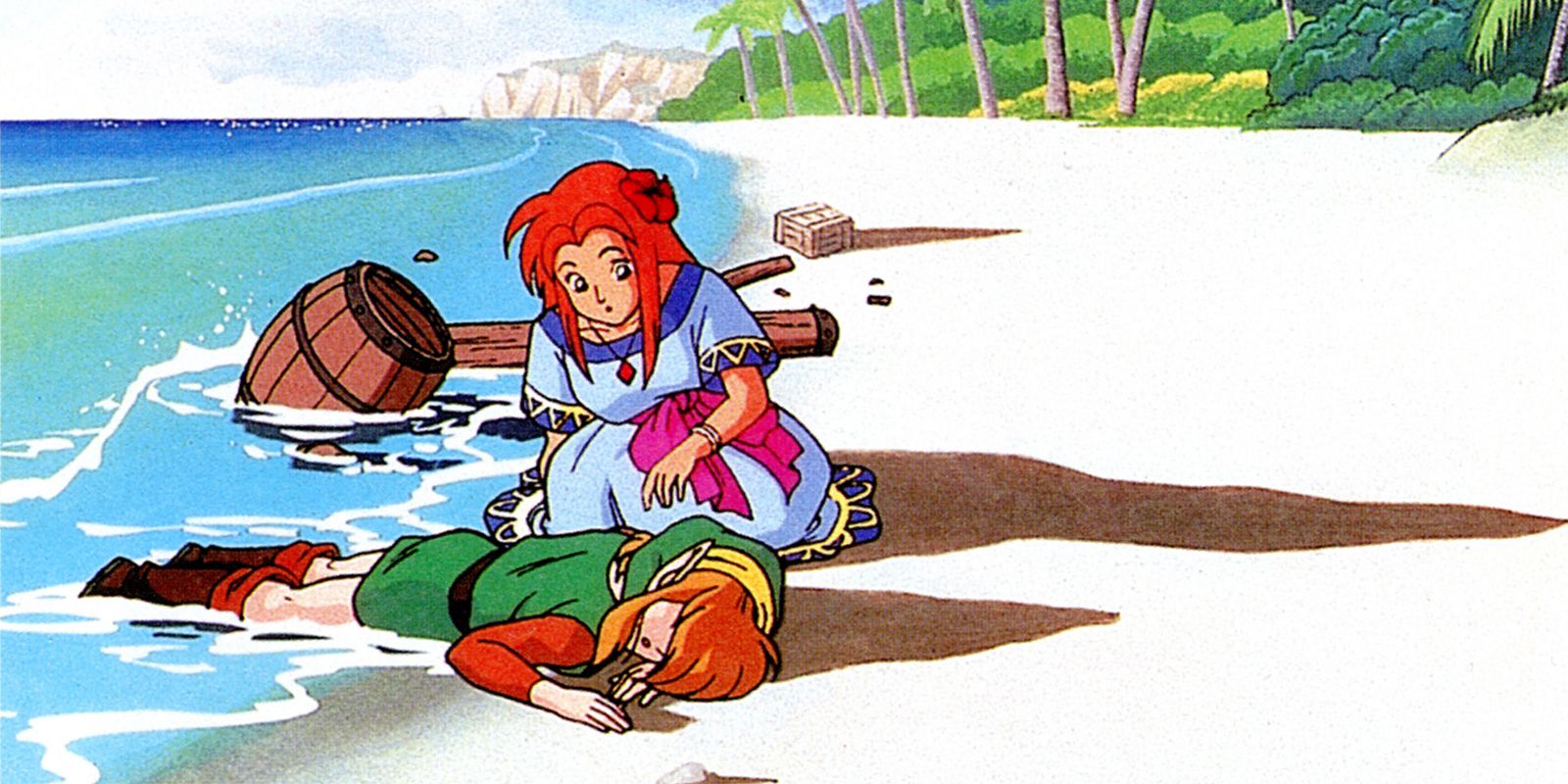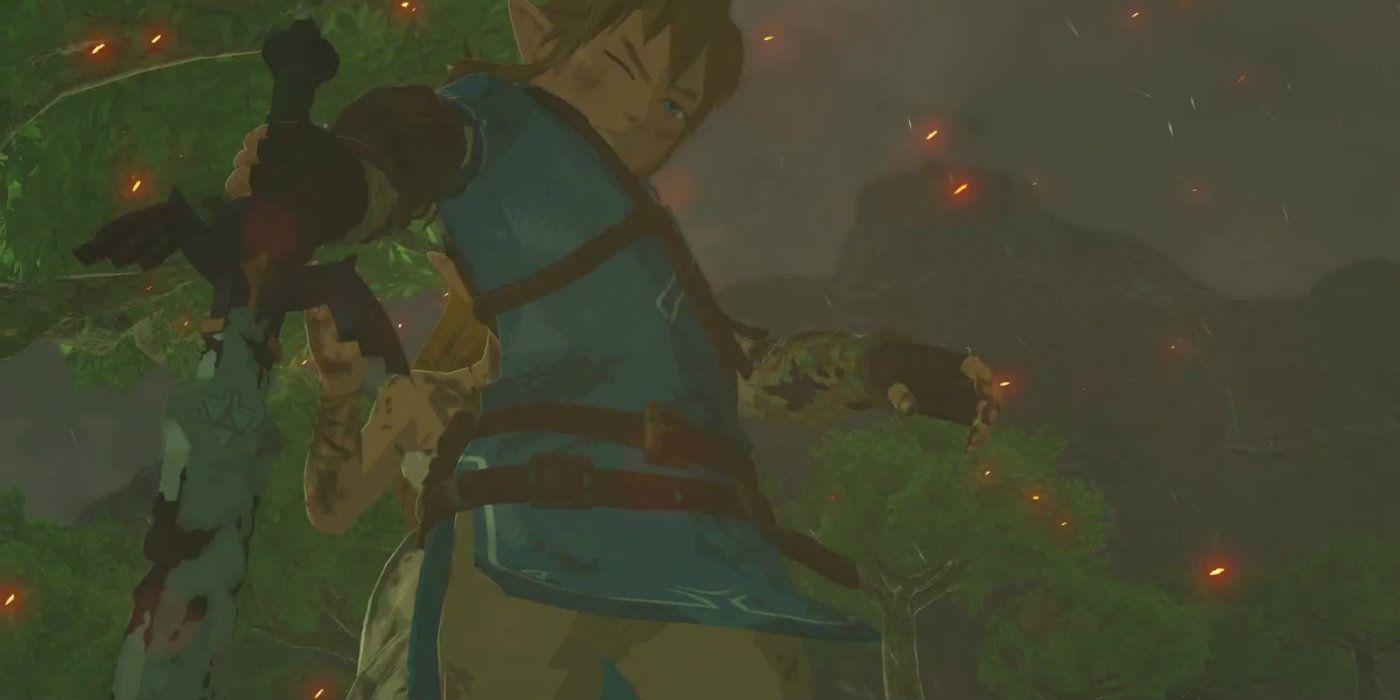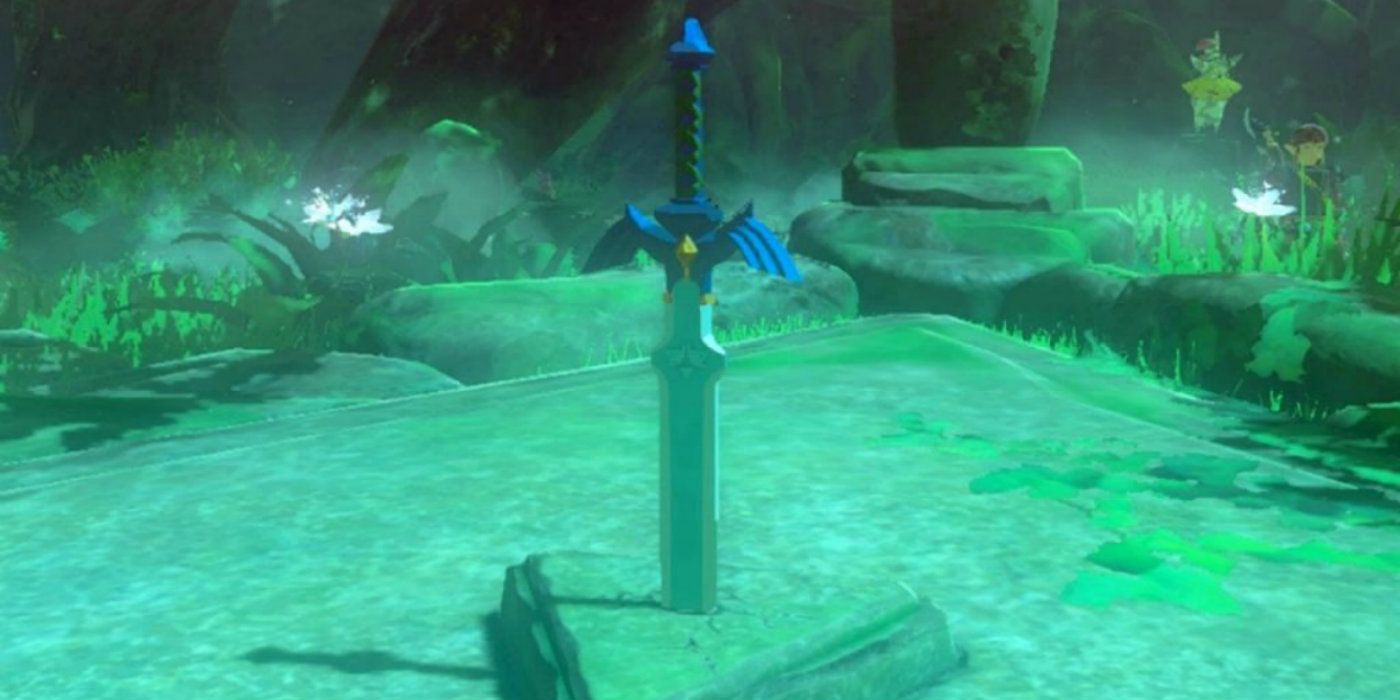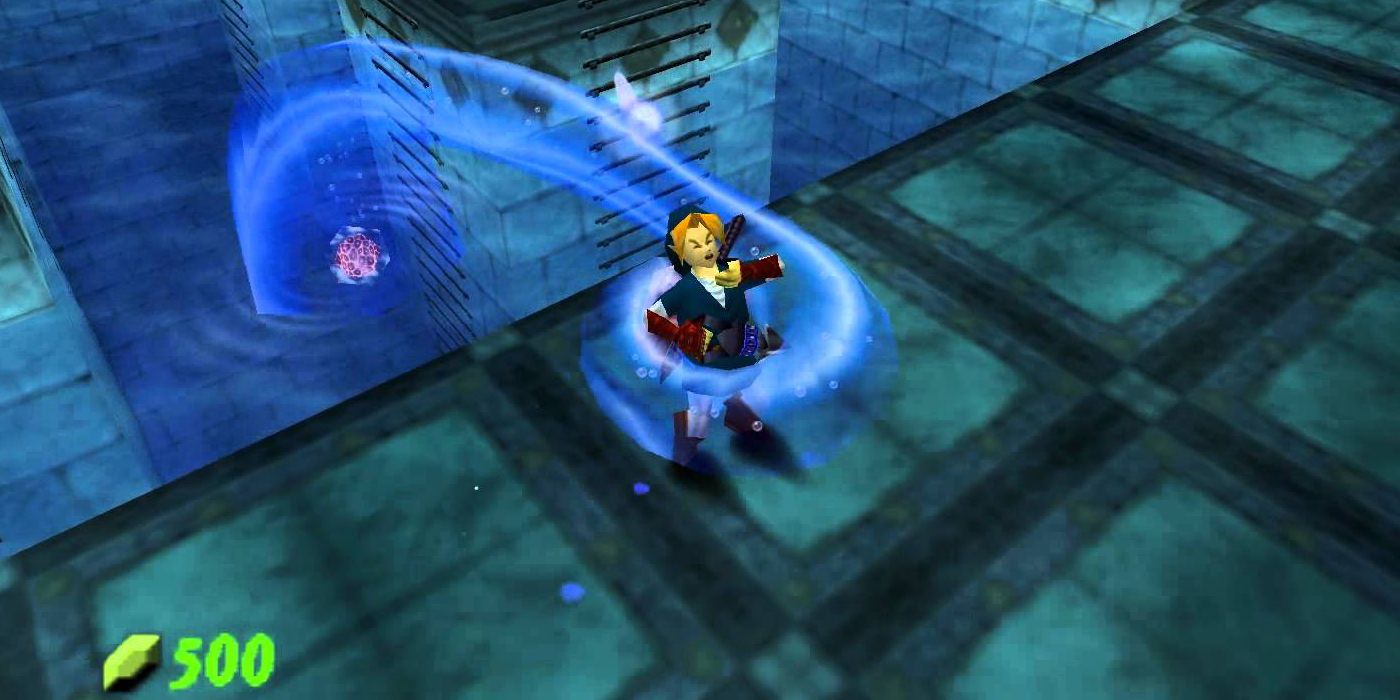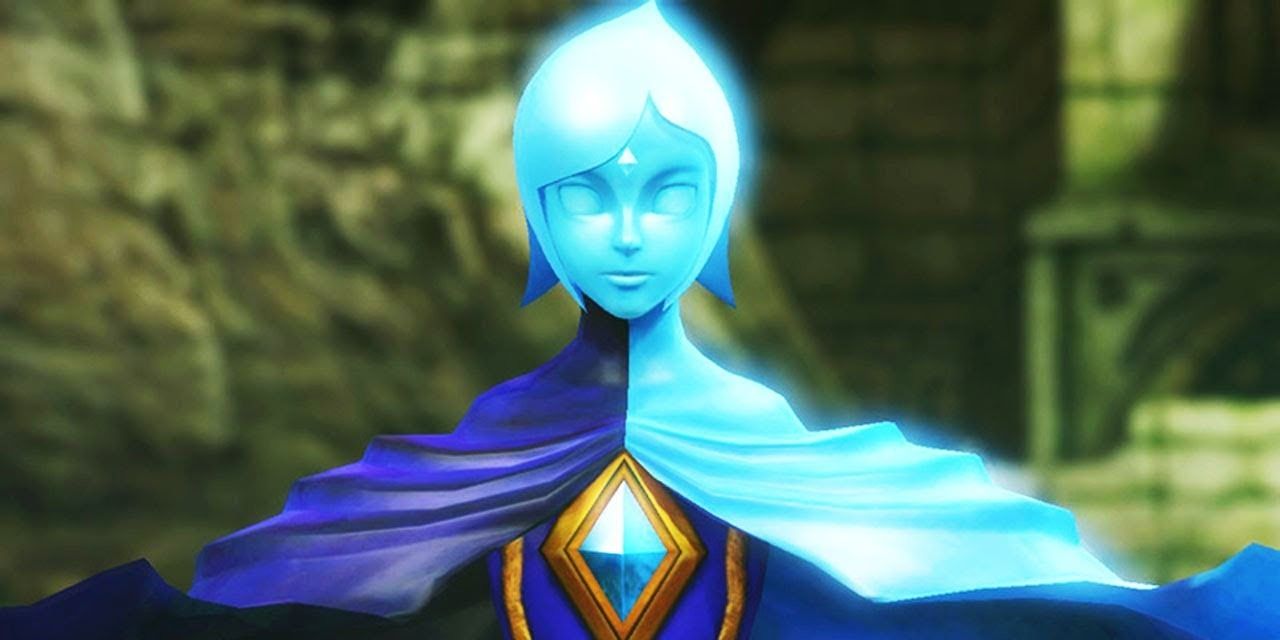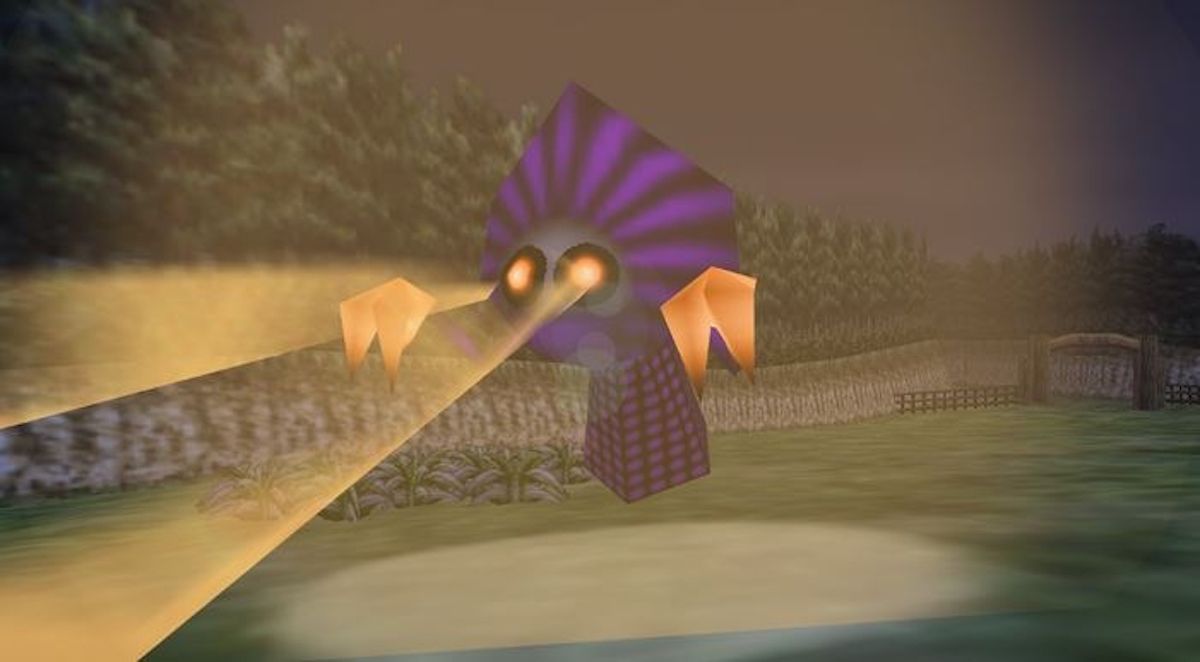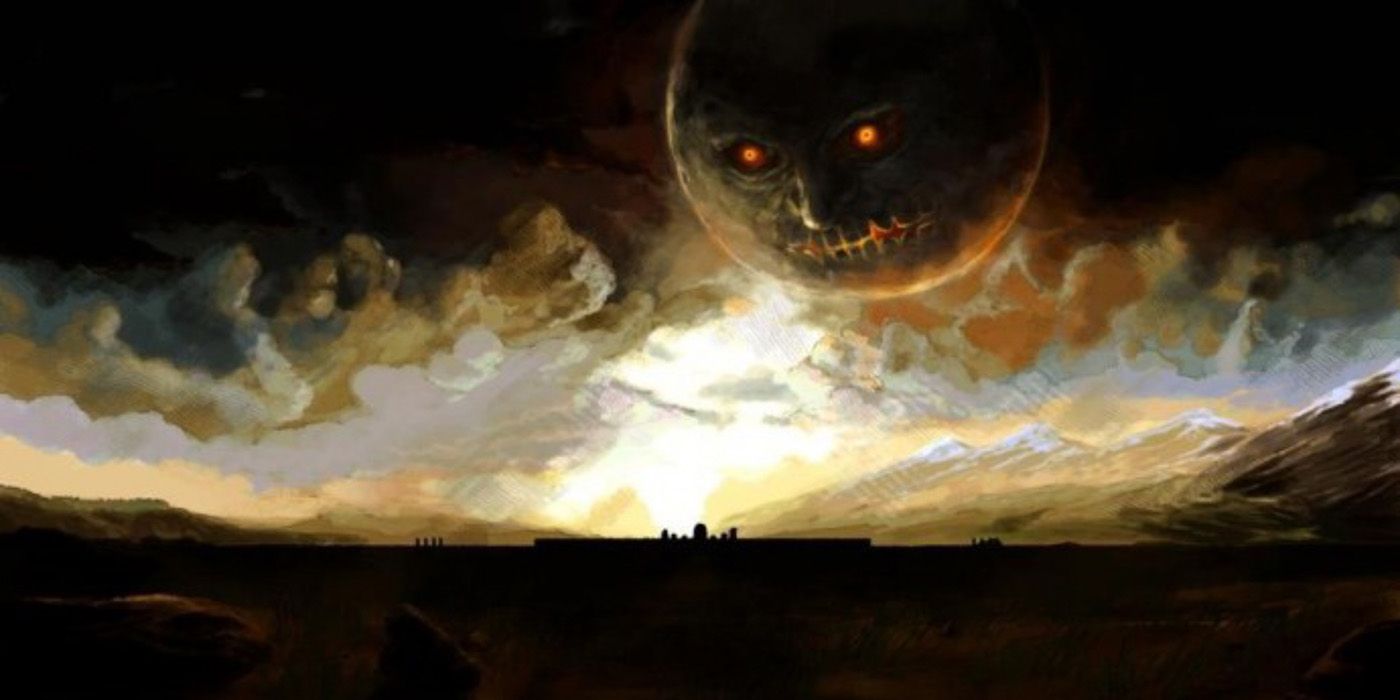The latest release in the long-running Legend of Zelda franchise, Breath of the Wild, has been met with massive acclaim and has been incredibly well deserved. The tired open-world genre has been given a breath of fresh air and has proven the quality assured by Nintendo since the '80s.
However, BotW has caused ripples in the established timeline of the games, which was already tenuous at best. Spanning millennia, each game in the series is dubiously connected to one another according to the official timeline written in the Hyrule Historia.
With over 25 years of games to cover, and with plots never intended to fully connect, Nintendo’s attempt at aligning everything was admirable, but left a few conspicuous holes in the quilt.
In our 15 Legend Of Zelda Plot Holes You Completely Missed, we’re tackling some of the most curious and overlooked gaps. With that said, while many of these can theoretically be solved with information from the Historia and Nintendo, none have had their case officially closed just yet.
Gerudo Procreation
The Gerudo race is one of the most prominent throughout Hyrule, and has appeared through many iterations of the franchise. As a desert-based people, they’re a female-only clan known for their thievery.
However, their most infamous element is that they were responsible for the birth of Ganondorf, the series’ primary antagonist and... wait a minute, how did they even get pregnant if they’re all female?
While this plot point has been “addressed” (more like danced around) there is no conclusive statement for how exactly a Gerudo finds a mate. Breath of the Wild makes it clear that Gerudo women go forth from the desert to find a beau, but they're far less hospitable in Ocarina of Time, being openly hostile towards men.
There's one male in the Gerudo clan every hundred years, and he’s the king. Does that mean he fathers every Gerudo child until the next male heir is born? Or perhaps the women go to town and liaison with any gentleman that catches their fancy?
Then again, all their daughters bear distinctly Gerudo traits, so what are they-- the Asari from Mass Effect?
Shifting And Anachronistic Locations
Breath of the Wild’s Hyrule is massive and gorgeous, but it’s the world’s underlying sense of nostalgia and mystery that makes it as addicting as it is. The ruins littered about the landscape feature symbols and iconic locations from previous games in the franchise, making BotW assuredly the tail-end of the "Twilight Timeline."
The Great Plateau is the Hyrule from Ocarina, and everything beyond was the result of the territory growing. Out there, we find the Eldin Bridge and castle from Twilight Princess. We even see the ancient shrines from Skyward Sword. There’s a problem, though: they’re all in the wrong places.
The Lost Woods, heavily implied to be those from Ocarina of Time, should be south of the Great Plateau, but are instead north of Hyrule Castle. Kakariko Village is in a similar location, but no longer at Death Mountain’s doorstep. The list goes on.
Sure, this could be explained by tectonic shifts during the ages that transpired between games and, to be fair, there’s evidence of this regarding the escalation of the Northern Continent, but until it's addressed, we’re just supposed to accept that this isn’t an issue on Nintendo’s to-do list.
The Origins Of The Rito
The Legend of Zelda franchise is blessed with excellent and unique race designs that (generally) eschew the most basic versions of dwarves, elves, and the like.
The rock-eating Gorons, the musically gifted merpeople known as the Zora, and the forever-childlike Kokiri are all great examples of this. The humanoid-birds of the Rito would also make this list, if it weren’t for their confused origins.
According to series director Eiji Aonuma, the Rito of Wind Waker evolved from the Zora clan in Ocarina of Time. This is corroborated in-game, as the character Medli shares her blood with the Zora Earth Sage.
Breath of the Wild actively contradicts this, however, as it has the Rito and Zora living side-by-side. True, BotW appears to not be in the Wind Waker’s timeline, but then that leaves the question as to what evolved into the Rito if not the Zora?
What's The Deal With Ganon/dorf And Demise?
Ganon is the series' main villain. Sometimes he’s at the forefront, but other times he’s pulling the strings from behind a red herring villain-- like the criminally underused Zant. The enormous pig-like wizard/demon thing also has a human form called Ganondorf. Portrayed as the “King of Thieves," he’s a manipulative sorcerer who occasionally ends up sympathetic.
The mind-boggling part comes in the form of a “chicken-or-the-egg” scenario: what’s the real form of this entity? Is Ganon the Frieza-esque final form of Ganondorf, or is Ganondorf the human skin that Ganon wears to blend in? Nintendo claims that both forms are the “real” one, but their clashing personalities and desires make that a hard pill to swallow.
Then we have Demise. As the true villain of the franchise’s origin story, Skyward Sword, Demise essentially serves as the devil of the Zelda universe. In SS, upon his defeat, Demise curses Link, Zelda, and himself to a never-ending cycle of reincarnation as a means to achieve his vengeance.
This further complicates the now-triumvirate of evil, as the three distinct forms all have their own agendas, especially considering that Ganon’s two forms only serve their supposed ancestor indirectly.
The Sheikah Population
The Sheikah are one of the most mysterious races in Hyrule. This also makes them one of the most confusing.
Known as the “Shadow Folk,” they are a mix between ninja and technological marvels, silently guarding the royal family of Hyrule through the ages.
Players were first introduced to them in the N64 classic, Ocarina of Time. Here, there are only a handful of them left in the world, although their iconography and artifacts adorn the land, suggesting they were once quite numerous.
When that timeline makes it to Twilight Princess, there’s apparently only a single Sheikah left, yet when we get to BotW’s era, they had clearly proliferated extensively to the point where there are even rival clans.
While it’s possible that some stragglers hid in the shadows like their name suggests during the TP era, there’s no real explanation for how they returned to strength.
The Hero's Arsenal
In every single Zelda game, the player accrues an immense amount of unique weapons, items, and armor that are skillfully deployed to defeat enemies and solve puzzles.
Finally, after defeating whatever incarnation of Ganon awaits at the end the quest, the Hero rests easy with this enormous arsenal. However, what happens to all that stuff?
You’d think that they’d store this all away for the next time they needed a boy in green to defeat a pig wizard, but in similar fashion to the Metroid series, the poor lad is forced to enter trap-ridden caverns to scavenge for other enchanted tools.
Sure, that could be explained away by the amount of time that passes between incarnations, but what about the games that are direct follow-ups?
After beating Ocarina of Time, the young Link still has all the stuff from his adventure, including magic spells, bows, bombs, and a sweet hammer. Yet, in Majora’s Mask, he’s down to a sword, shield, and ocarina-- the last of which gets lifted by the Skull Kid.
Sure, it could be argued that the Skull Kid took the rest of his items, but it’s pretty clear that it was the musical instrument alone.
The Triforce Wish
The Triforce is not only the most iconic symbol of the Zelda franchise, it’s also the ultimate MacGuffin for the games it’s featured in. Comprised of three pieces representing Courage, Wisdom, and Power, it was left by the Goddesses as they returned to the celestial plane. It’s said that whoever finds this sacred artifact will have any wish-- whether it be good or evil-- granted.
These wishes have been taken advantage of in multiple entries for multiple purposes, both good and evil by, unsurprisingly, Link and Ganondorf, respectively.
However, this brings up a problem in which nearly all fiction that features wishes needs to grapple with: why in the world don’t they just wish that evil stops returning to their realm so they can legitimately live in peace? Could it be that they inexplicably forget that this is going to happen repeatedly?
The Religion Of The World
Our first major foray in the religion of the Realm of Hyrule’s was in the ground-breaking Ocarina of Time. Sure, there were hints here and there, but it was never delved into with such detail as when the Deku Tree filled in the blanks.
Three Goddesses known as Din, Farore, and Nayru created the land and all who lived upon it, leaving the Triforce in their wake as they ascended to the heavens. This seems to be the widely-accepted belief system amongst the populous and is referenced thoroughly through dialogue, items, and symbols.
When Skyward Sword-- the origin story that mostly makes sense-- was released, it retconned this tale.
Here, it’s stated that there was an all-powerful Goddess named Hylia who was responsible for what the “Golden Goddesses” were previously attributed.
Hey, that’s okay, as thousands of years pass, some religions fade and others emerge, so it makes sense… except that at the far end of the timeline, in BotW, it appears that Goddess worship is back in business.
Of course, this was all made stranger by the fact that the earliest games in the series are filled with allusions to Christianity, but that’s another story altogether.
The Distressing Amount Of Alternate Dimensions No One Cares About
Parallel universes, also known as multi-verses, have compelling quantum-mechanical theories behind them right here in the real world and not just in comic books.
We’ve seemingly failed to prove them one way or another here, but in the medieval realm of Hyrule, they're not only proven to exist, but they can seemingly be accessed on a whim. Also, somehow, someway, this is never discussed at length by anyone or admired with any of the respect that it so desperately deserves.
Hyrule’s inexplicable glut of alternate realities and the means to access them are nary cross-referenced, despite the dramatic consequences they pose/d to the “prime” Hyrule.
Additionally, considering so many encounters with various entities from multiple realms like the Dark World, Twilight, Lorule, a place born from Link's dreams and more, don’t you think this would be a well-documented phenomena? Instead, everytime it happens, everyone is shocked.
Hyrule's Forgetfulness
The world of Hyrule operates fairly normally, except for one major problem: every few centuries, an evil sorcerer is reincarnated to cause devastation, along with a boy and princess who will stand up to his evil and stop him. This is a pretty big deal and it’s been happening for millennia.
So why does it continually take the people of Hyrule by surprise? Sure, there are legends and stories passed down, but almost none of it seems to be regarded as fact, just overblown myths, which leads to the Kingdom being generally unprepared to handle the situation when it inevitably arises.
This was somewhat addressed in BotW, where we actually get to see the King and Zelda gradually become aware that the legends weren’t just stories and were true.
This is great, the fact that they even considered them to be a myth at all is odd, however, since the previous cycle was fully aware of the cataclysmic event, succeeded in stopping it, and then did everything in their power to make sure people would continue to remember and prepare... but they didn’t.
It's not like it would have paid off anyway, since Ganon commandeered all the fail-safes, but still.
The Nature Of The Master Sword
The Blade of Evil’s Bane, the Sword That Seals the Darkness, the Master Sword-- no matter what name this holy blade goes by, it is only wielded by the Hero chosen by the Goddess and delivers cataclysmic damage against the forces of darkness.
The Legendary Hero imbued this blade with the Sacred Flames and eventually the touch of Hylia herself in order to give it the strength needed to stop evil once and for all. It's too bad that it has inconsistent powers.
Residing in its pedestal during Twilight Princess, nearly everything surrounding it was in decay and ruin, but the blade remained pristine, giving off the idea that it could never be tainted. Yet, in Breath of the Wild, it chips and dirties under the stress of the Calamity like a common tool.
Sometimes it can shoot beams, sometimes it can’t. Sometimes it needs prayers to be at full power, while other times it just needs to be near evil. Additionally, sometimes it has limitless strength, while other times it needs to be recharged.
While it’s almost inarguably the ultimate weapon against Ganon, it’d sure be nice to get a grip on what it is or isn’t capable of.
Who/What Designed The Dungeons And Their Puzzles?
Ah, the dungeons. Filled with difficult monsters, head-scratching brain-teasers, and precious items needed to successfully defeat the heinous boss that awaits Link in the end, dungeon-crawling-and-conquering is one of the trademark gameplay elements of the series.
Some of them have backstories, or at least whispers of backstories. For example, the many temples in Ocarina of Time are generally considered to be places of worship but, like, has anyone actually been inside them? They’re convoluted, trap-laden, and generally not safe enough to close your eyes in, let alone pray or even access.
Disregarding their purposes for a moment, who went in, set up the puzzles, methodically put in appropriate treasures, and then locked the doors?
BotW might get flak for having a non-traditional dungeons, but at least all of them made narrative sense.
Fi's Purpose
For a stretch of time, Zelda games saddled players with “helpful” guides, such as the infamous “Hey! Listen!” Navi or the mean Midna from Twilight Princess.
Skyward Sword decided to one-up everyone by including a Spock-like spirit in the form of Fi, who dutifully told the player exactly what they needed to do, when to do it, and how. Unsurprisingly, this was incredibly annoying.
Even though she was grating, Fi ended up being an interesting component in the plot, eventually sealing herself within the Master Sword, hoping to meet Link in the future before succumbing to slumber.
Of course, the problem with adding an element like this in a prequel to a twenty-five year old franchise is the fact that she is never mentioned and never appeared in any of the chronologically following games.
That said, she does make an “appearance” in BotW during a critical moment, despite the fact that she was supposedly hibernating for eternity. If she could wake up to offer critical advice at any point, then where was she during the other tumultuous times in any other game when the Hero wielded the Master Sword and desperately needed to know how to use the dowsing ability?
The Existence Of Aliens
Majora’s Mask is the weirdest, darkest, and most unsettling Zelda to date. While its three-day time-travel gimmick produced an exceptionally unique gameplay style, it is the game’s world of Termina and its various denizens and subplots that have given it its appropriately legendary status.
One of these subplots involves stopping an alien invasion. This is not a joke. Known only as “Them,” they arrive at Romani Ranch to abduct cows (and maybe Romani herself.)
This is an awesome little sequence, but it’s also incredibly bizarre that barely anyone else on the continents that hold Hyrule, Termina, and elsewhere have never mentioned such invaders.
Sure, the Bombers and Romani refer to the beings as “ghosts,” which isn’t that far-fetched for citizens in this universe who routinely put up with Poes and Stals, but “They” are clearly modeled after the “Flatwoods Monster” and are accompanied by appropriate alien-sounding music. These things are aliens, and they're never addressed again.
The Nightmare Hell Of Termina
What in the world is actually going on in Termina? Is this a real place? Is it the afterlife? The Hyrule Historia claims it’s a parallel world, but other theories abound.
Let’s not focus on its origin, though. Instead, let’s take a long, hard look at the consequences of Link’s actions here. Not unlike his "vacation" to Koholint Island, Link's presence supposedly averts the apocalyptic crisis of moonfall, but leaves a footprint of shattered lives in his wake.
You can’t complete all the side-quests by the third day that you finally choose to defeat Majora, so you better decide which ones you want to be canon to that world.
Speaking of the moon… is this Termina’s specific moon? Or is this moon falling onto the entire planet? Does anyone else on this continent know about this?
Then there’s the time travel. Link’s time-traveling exploits in Ocarina split the entire timeline into three and he barely did anything. Compare that to the near-constant time manipulation in Majora, and the very fabric of space-time is almost certainly in jeopardy.
Termina’s mere existence (or lack thereof) is a plot-hole big enough for its own list, but with far more terrifying consequences than confused fans.
---
Can you think of any other massive plot holes in The Legend of Zelda series? Let us know in the comments!

